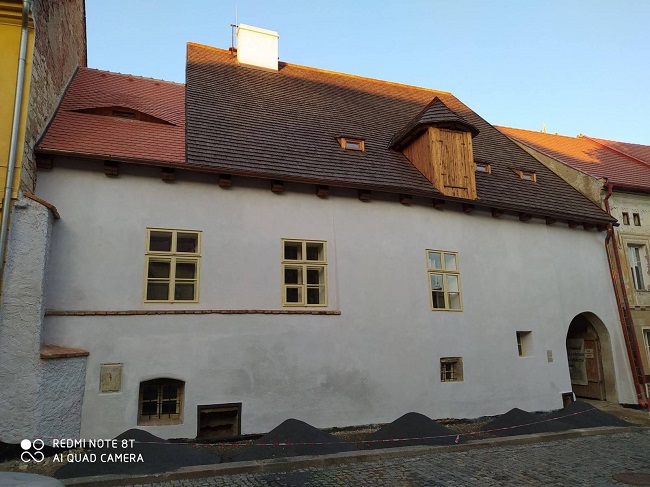
The Žatec Association had the historic Meder's house repaired
 |
Žatec – The Žatec Association had the historic Meder House in the city center repaired. The costs for the restoration and furnishing of this cultural monument are estimated at 24 million crowns. In the building, which is in the heart of the heritage reserve, the association plans to create a small museum, said the Chairman of the Meder House Association, Petr Antoni, to ČTK. One of the oldest houses in Žatec was declared the Monument of the Year 2020 for the Ústí region this year.
The bourgeois house had not been inhabited in recent decades and began to decay; in the 1980s, its roof and trusses collapsed. Before the rescue, the house was falling apart and was overgrown with volunteer trees. Preparatory work for the restoration, including archaeological surveys, began four years ago. The actual construction work then started two years later.
According to Antoni, the reconstruction was challenging. "The house was cleared of debris, rubble, and clutter; some walls had to be demolished. One of the medieval walls was leaning and also had to be taken down. Only then could construction begin. In the meantime, a part of the large cellar's vault collapsed, but luckily no one was harmed," said the chairman. It was also necessary to build a shingled roof, which the craftsmen made using traditional methods.
The construction work cost nearly 21 million crowns, mostly funded by European grants from the Integrated Regional Operational Program for the preservation of monuments. A smaller portion of the costs was contributed mainly by local entrepreneurs.
The Žatec Association is preparing an exhibition in the building that will focus on the history of the house, information about the restoration process, archaeological finds, and interesting facts about the town. Currently, the association has a project prepared for the interactive exhibition but is still seeking financial resources. The house could then, if the epidemic situation allows, be accessible to the public in the summer.
This year, the Meder House became the Monument of the Year for the Ústí region; according to Antoni, this is likely due to the extensive renovation. "I believe the evaluators appreciated that from a complete ruin, overgrown with bushes and seemingly doomed to extinction, we managed to restore an impressive bourgeois house that breathes history," said the chairman of the association.
The bourgeois house, named after its last German owners, has stood in the city center for several centuries. The first written mention appears in the town book from 1564, but the house is demonstrably older. This is evidenced by its late Gothic foundations, making it one of the earliest examples of urban medieval architecture in the country. Several historical architectural elements have survived to this day, such as a terracotta Gothic portal made from fired bricks.
The English translation is powered by AI tool. Switch to Czech to view the original text source.
0 comments
add comment










